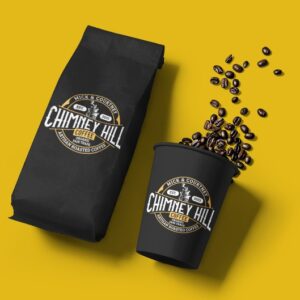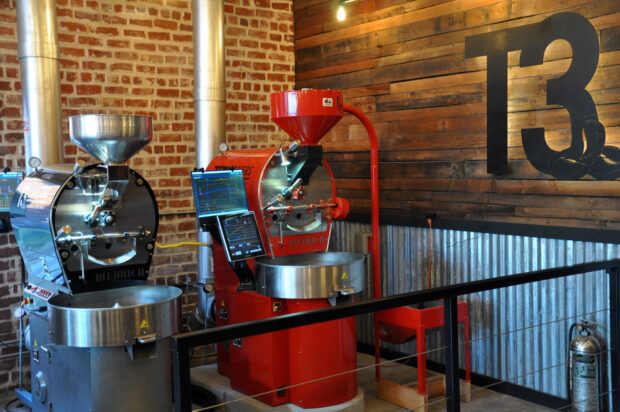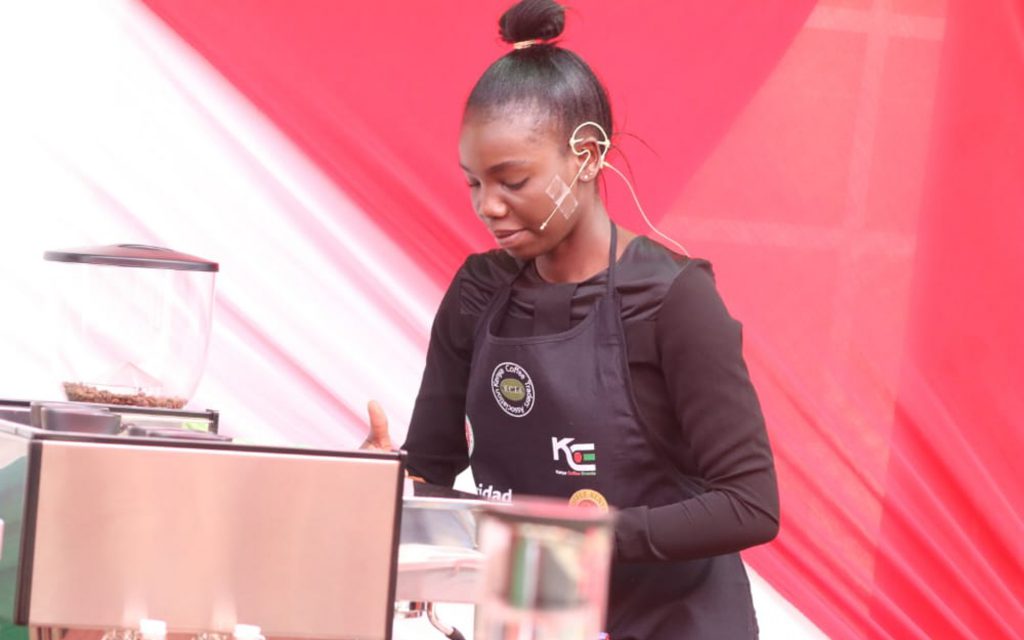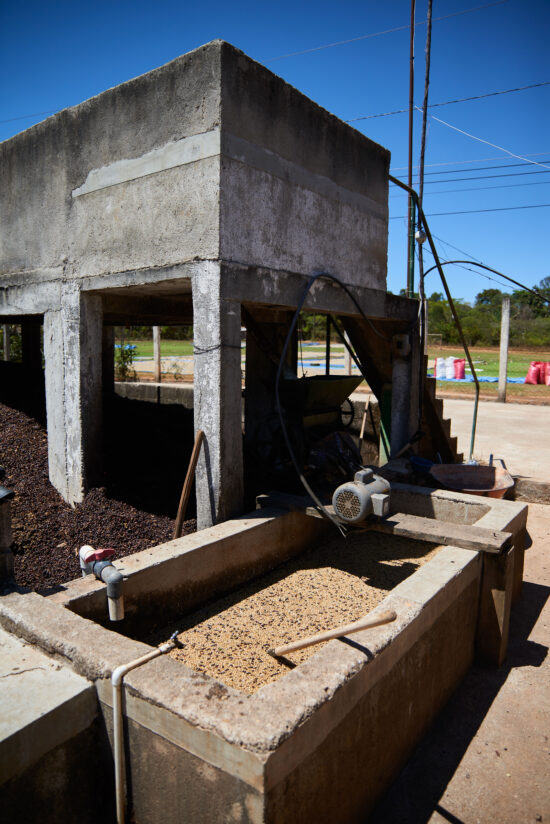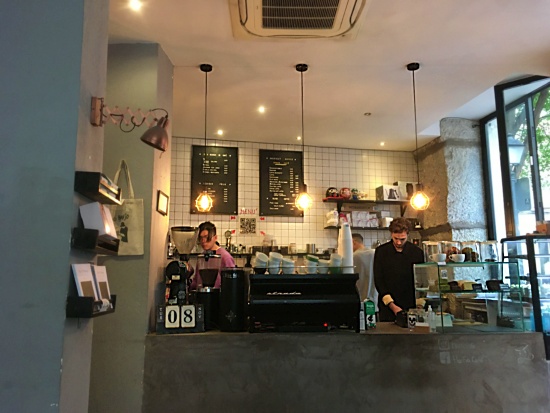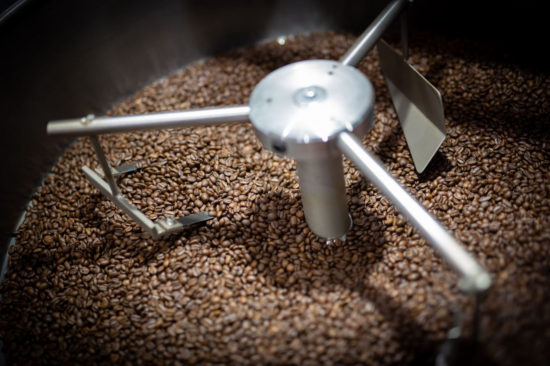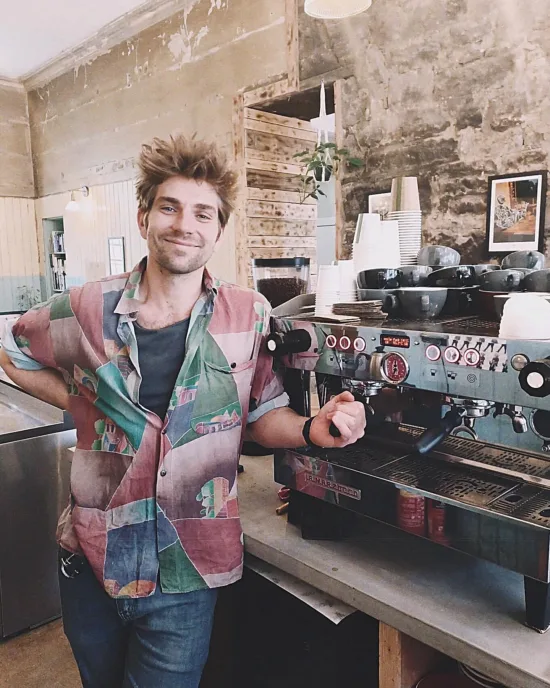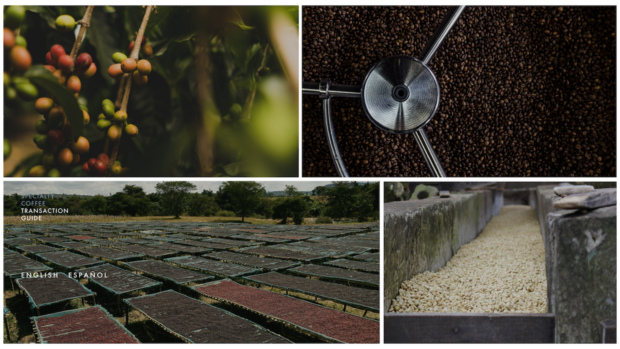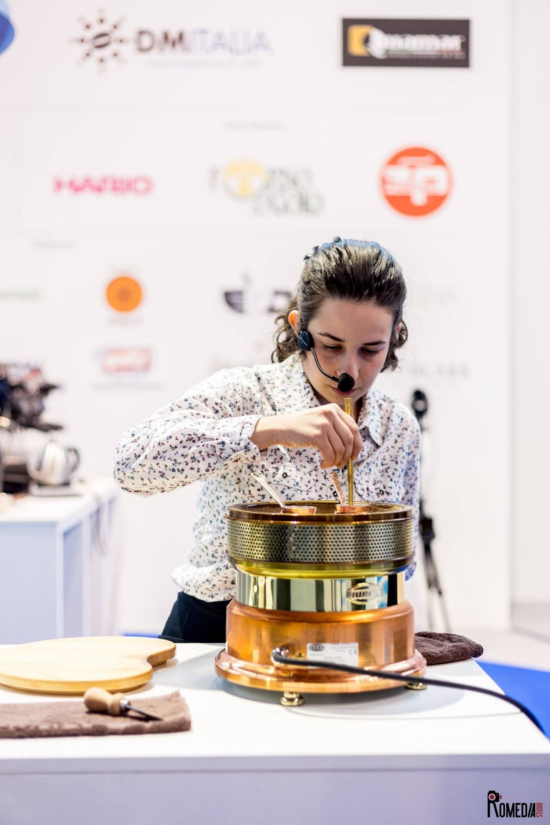The most affordable Keurig coffee maker is available exclusively at Walmart and comes at a sweet price of only $59.00. In this article, you’ll find out how good it really is, and also find additional information like how to clean it, or do you need a water...
Understanding the Process: Lactic-Processed Coffee
Understanding the Process: Lactic-Processed Coffee
Understanding the Process: Lactic-Processed Coffee
Understanding the Process: Lactic-Processed Coffee
Understanding the Process: Lactic-Processed Coffee
Understanding the Process: Lactic-Processed Coffee
Quick French Press Iced Coffee (No, It’s Not Cold Brew)
This is the absolute fastest way to make French press iced coffee. Just forget about cold brew concentrate – with this Quick French Press Iced Coffee Recipe you can have your iced coffee ready in 5 – 6 minutes. Who doesn’t like the French press?! It’s...
Here’s How to Change Keurig 2.0 Water Filter Easily
Not sure how to change Keurig 2.0 water filter? Here are step-by-step instructions that will help you do it quickly and easily. Keurig water filter should be changed every 2 months or 60 tank refills. The water filter is located inside the water tank, on the valve at...
The coffee rose for assessing Anaerobic coffee
I just came across this really neat tool to assess anaerobic coffees. I haven't used it for cupping yet. I'm not sure I will like it either because the idea of lowering the score of the coffee just because it tastes has some thyme flavors. At the same time I...
Three US Coffee Championship Events Are Heading To Rancho Cucamonga
This article is from the coffee website Sprudge at http://sprudge.com. This is the RSS feed version. The 2024 US Barista Championship, Brewers Cup, and Cup Tasters will take place March 15-17 at Klatch Coffee Roasters in Rancho Cucamonga, California.
The Origin Story of Turtle Island Coffee in Vancouver, B.C.
A new Indigenous-owned coffee company based in Vancouver, British Columbia, called Turtle Island Coffee has launched with the goal of exposing more people to high quality specialty coffee and Indigenous...
Get Ready for The Barista League’s 2024 Season
The Barista League has announced 12 competitions across four continents. BY J. MARIE CARLANBARISTA MAGAZINE ONLINE Photos courtesy of The Barista League When The Barista…
Get Ready for The Barista League’s 2024 Season
The Barista League has announced 12 competitions across four continents. BY J. MARIE CARLANBARISTA MAGAZINE ONLINE Photos courtesy of The Barista League When The Barista…
Get Ready for The Barista League’s 2024 Season
The Barista League has announced 12 competitions across four continents. BY J. MARIE CARLANBARISTA MAGAZINE ONLINE Photos courtesy of The Barista League When The Barista League announces new events, it’s worth paying attention! This year, the schedule will be...
Weekly Coffee News: EUDR and Africa + More Celebrity Coffee
Welcome to DCN’s Weekly Coffee News. Keep up with all the latest coffee industry stories and career opportunities by subscribing to DCN’s newsletter. Tell our editors about your news here. Report: Small-Scale Farmers in...
Do Higher Coffee Prices Mean More Money For Farmers? A Story From Sumatra Shows It’s Complicated
This article is from the coffee website Sprudge at http://sprudge.com. This is the RSS feed version. Since coffee costs more now than ever, do those coffee prices impact the amount of money earned by coffee farmers?
Coffee News Recap, 2 Feb: Applications open for Australia’s Richest Barista 2024, De’Longhi reports 4.6% revenue increase after La Marzocco move & other stories
Every Friday, Perfect Daily Grind rounds up the top coffee industry news from the previous week. Here are this week’s coffee news stories. The word of the week is: expansion. Mon, 29 Jan AeroPress launches limited-edition Clear Pink brewer. The coffee brewer is made...
Watch The 8 Best Coffee Videos Vying For Sprudgie Awards
This article is from the coffee website Sprudge at http://sprudge.com. This is the RSS feed version. The best coffee videos from 2023 featuring Cafe Imports, Aramse, Nguyen Coffee Supply, Wildly, Mirror Coffee Roasters, Alto Stories, Quek Shio, and Cafe Retiro.
Robusta is great and has untapped potential
I live in the US and my typical choice of coffee is lightly roasted Ethiopian pour overs. I generally love acidity and fruit flavors in my coffee. My experience with Robusta has often been poor. Very dark, roasty and maybe chocolatey. I participated in the Hoffman...
Design Details: Brewing Reinvented at ULA Café in Melbourne
Welcome to Design Details, an ongoing editorial feature in Daily Coffee News focused on individual examples of coffee shop architecture, interior design, packaging design or branding. If you are a coffee...
Robert Downey Jr.’s New “Happy Coffee” Is Really Depressing
This article is from the coffee website Sprudge at http://sprudge.com. This is the RSS feed version. Robert Downey Jr. and Craig Dubitsky team up for Happy Coffee.
Out Now: The February + March 2024 Issue of Barista Magazine!
In our new issue we feature Lisa Lawson from Glasgow, Scotland, take a look at the newest grinders, explore spring drink inspiration, see how more women are getting involved in coffee tech, and much more! BY SARAH ALLENBARISTA MAGAZINE We’re stoked to announce the...
The coffee industry’s biggest competition: The story of the World Barista Championship
Every year, the global coffee industry gears up for one of its most exciting and groundbreaking competitions: the World Barista Championship. For more than two decades, the WBC has been one of the biggest catalysts for change and innovation in specialty coffee, and...
The 2023 Specialty Coffee Transaction Guide Has Landed
The 2023 edition of the Specialty Coffee Transaction Guide (SCTG) guide went live today, providing actors throughout the coffee chain a data-driven tool for green coffee price discovery. The full...
Espro great until I needed replacement filter ☹️
I've had an Espro P7 for nearly four years after seeing glowing praise on this sub (to which I later contributed). Before I bought the P7 I looked at the replacement parts available and they seemed like a solid company in that they sold e.g. replacement filters...
New Bill Requires More Kona In Your Kona Coffee
This article is from the coffee website Sprudge at http://sprudge.com. This is the RSS feed version. Currently a coffee only need to be 10% Kona to be labeled as such.
What’s the best and worst part about owning and running a coffee shop?
I'm not interested in getting into it myself, as I have no experience in the service industry, no real appetite for risk and no desire to run a business in general. But sometimes I think about it and I wonder what's the most enjoyable thing about it and...
minimum dose size?
I use the Hario switch to brew my coffee and am trying to reduce my caffeine consumption. Hence I would like to brew smaller cups of coffee. I am currently using 10g of coffee with 160g of water. (1:16 Ratio) I am wondering if there is a minimum amount of coffee...
[CAFE OWNERS] Background before starting a shop?
I’ve worked in coffee for 6 yrs as a barista and shift supervisor and have passion for it. I’ve decided that I want to open my own place in the future and so I’ve been doing the research to make a business plan. Lately, however, I’ve begun to realize just how many...
Understanding the Process: Lactic-Processed Coffee
We continue our series on processing by looking at the lactic process, a complex method that can produce stunning results.
BY TANYA NANETTI
SENIOR ONLINE CORRESPONDENT
Photos courtesy of Felipe Sardi
A simple cup of well-brewed coffee can have endless variations of flavors and aromas, which are closely linked to the many different aspects of the coffee itself. Origin, varieties, processing, and roasting style all deeply influence the final cup, so it’s worth understanding these variables better, including coffee processes.
In addition to the more traditional processes (natural, washed, and honey), in recent years many different methods have begun to spread. Anaerobic, lactic, double- and triple-fermented, and thermo shock are just some of the newer coffee processing methods, and it seems that additional processing methods are constantly being developed and discovered.

Introducing the Lactic Process
To promote lactic fermentation, producers create an ideal environment for the growth of lactobacillus cultures, the same bacteria used in dairy production responsible for the creation of lactic acids. They do this by placing highly sugary coffee cherries in an anaerobic (without oxygen) tank and leaving them to ferment. They carefully control the process, checking pH levels, temperature, and oxygen levels to find the perfect conditions for lactobacillus to flourish and dominate the fermentation.
Felipe Sardi, co-founder of the coffee farm La Palma y El Tucan, helps us to understand more about the lactic process, starting with the origins of their lactic-processed coffee.
“When we started processing the coffee cherries in the wet mill, we instantly fell in love with the complexity of the entire process, and saw a huge potential to innovate and experiment,“ Felipe says. “We slowly started to understand that through fermentation we were in fact triggering a process of acidification and disintegration of sugars. As microorganisms feed on the sugars to produce ethanol, organic acids, and carbon dioxide, there is a decrease in the Brix levels (the indicator of sugar content) of the coffee mucilage, which is eventually removed.“

Felipe continues, “We noticed that by controlling the fermentation environment we could have a significant impact on the final results. In the first attempts, the temperature and humidity levels sometimes accelerated the process, ruining many batches (and) increasing the chance of fungus proliferation, which spoiled the fruit and left undesirable flavors as a result. Understanding and trying to control all these variables was eye-opening for us and helped us work towards the goal of obtaining different flavor profiles, which in turn has opened the doors to the world of the lactic-processed coffees.”
How It Works
“This form of fermentation is classified as ’anaerobic,’ as oxygen has minimal interaction with the cherry and there is no agitation,” explains Felipe. “The coffee cherries are placed in sealed tanks after being hand-sorted upon arriving at the wet mill. The elimination of oxygen in this phase favors a greater concentration of lactic acid bacteria (and therefore of lactic acid) following the fermentation of the carbohydrates of the mucilage, which in turn contributes to the organoleptic profile of the resulting cup. The coffee cherries that will be processed with the lactic-fermentation method usually enter our wet mill with high Brix degree and pH readings, as these conditions will help the fermentation process to overcome the minimum time of 80 hours necessary for any lactic process.“
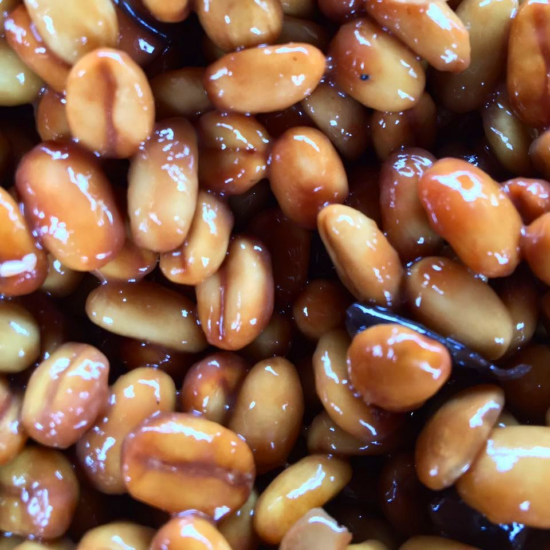
Lactic processes usually increase the perception of the body in the brewed cup profile. For this reason, the lactic process is most often utilized on coffee cherries from high-altitude farms; these cherries usually contain more mucilage, which helps balance the flavor profile of the resulting coffee.
Potential Challenges
Like all other processing methods, the lactic process can be difficult to execute, and has some possible downsides.
“One of the threats (from a producer’s point of view) of exploring lactic processes is the difficulty in avoiding phenols and over-fermented coffees,” Felipe says. “Due to the long times that we extend the pulp fermentation, as well as the moisture content control that we need to follow during drying, this is a very risky coffee process. The fermentation and drying times change with the different temperatures, humidity levels at the farm, and the (number) of kilograms in every batch.“

With so many variables to account for, a lot can go wrong. Felipe says that creating a ”recipe” for the perfect lactic processing method is complex. ”Pushing the limits of lactic processing too much may result in overwhelming bitterness and unbalanced cups, as we’re heavily affecting the perception of body over other attributes such as acidity and sweetness.”
If all goes as planned, however, a lactic-processed coffee will produce a very sweet cup with a medium-high body. It will have a strong lactic acidity profile, tropical fruit flavors/aftertaste, and a finish that can recall the flavor of papaya or pineapple yogurt. When producers succeed in performing the lactic process, the results can be incredibly rewarding.
ABOUT THE AUTHOR
Tanya Nanetti (she/her) is a specialty-coffee barista, a traveler, and a dreamer. When she’s not behind the coffee machine (or visiting some hidden corner of the world), she’s busy writing for Coffee Insurrection, a website about specialty coffee that she’s creating along with her boyfriend.
The post Understanding the Process: Lactic-Processed Coffee appeared first on Barista Magazine Online.

